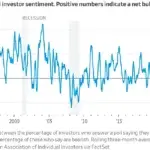A hedge fund is an investment fund that trades in relatively liquid assets and is able to make extensive use of more complex trading strategies. A hedge fund can short sell, borrow money, and use derivatives to name a few. These types of investment funds are typically utilized by accredited investors who have large sums of money.
Hedge Fund Mechanics
Hedge funds are seen as the “smart money” in the market, meaning that the most knowledgeable (typically) investors operate them. As a result, they are the smartest piles of money in the market. Hedge funds utilize an active portfolio management strategy which allows a hedge fund to respond quickly to market events. In addition, many of the most prolific billionaire investors in the market run their own hedge funds. Names like Stanley Druckenmiller, Paul Tudor Jones, Bill Ackman, Carl Icahn, George Soros, and Ray Dalio. So the question is “how can one see the positions that these billionaires have in the market?”
Form 13F
Form 13F is a report filed by institutional investment managers with control of over $100 million in assets to the SEC. The report is filed quarterly and lists all equity (not derivative) assets under management. Luckily, just about everyone has access to these reports. You can view these filings on the following websites:
On the websites you will have access to the following pieces of information relating to hedge funds:
-
13F filings and position lists for hedge funds in the United States.
-
Top stocks being purchased.
-
Top stocks being sold.
-
Favourite sectors.
-
Valuations of individual funds.
-
Historical performance of individual funds in comparison to the S&P500.
Potential Use of Form 13F
As a strategy you could just mimic the portfolio of a hedge fund but that’s unlikely to be fruitful. This is because in order to match the performance of a hedge fund, you would also need to know the derivatives that the fund is using. However, there are certain insights that you could use to gain an advantage in the market.
Retail investors could use these websites and 13F filings to:
-
Avoid buying into stocks that major hedge funds as a collective are selling heavily.
-
Research the companies held by hedge funds to obtain new trading ideas.
-
Review large insider buying activities of hedge fund managers or executives into their own fund. This could mean that the fund is ready to outperform in the long-term.
The thirst for knowledge is what separates the most sophisticated investors from novice investors. Having access to various pieces of information can help to build an ironclad trading philosophy. Reviewing 13F filings will definitely help with trading, however, the filings alone are unlikely to lead to investing success.
Leave a Comment Cancel Reply
You must be logged in to post a comment.






